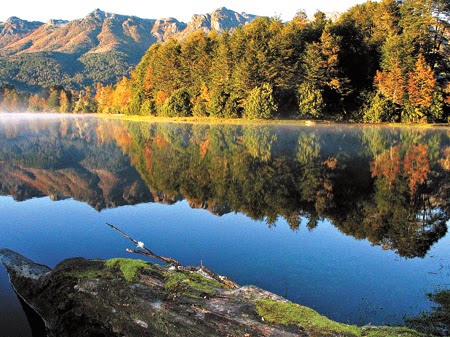The oldest National Park in Argentina
It is the largest of the National Parks in the area,
covering 705,000 hectares, and also the first one. It was created in 1934,
after the land donation made in 1903 by Perito Francisco P. Moreno. This changed forever the vision of the people that lived in the area, changing the history of Bariloche and tourning it into one of the most visited cities in Argentina.
 |
| Perito Francisco Pascacio Moreno's monument, located at the center or Moreno square. Entrance to Bariloche. |
|
|
There are many lakes spread across
the woods and mountains in the Park. The most important one (Nahuel Huapi, 650 square
kilometers surface and 454 meters deep), gives its name to the National Park.
Other lakes nearby Bariloche are Traful, Mascardi, Gutiérrez and Guillelmo.
You are able to navigate lake Nahuel Huapi whether if you take the tour to Victoria Island and Arrayanes forest or to Port Blest.
Among the typical fauna species you can find the
hullin, a carnivore mink that has its perfect habitat within the Park and Huemul (a sort of native deer) almost imposible to come across with.
 |
| Huillin |
 |
| Huemul |
As for flora, the extensive woods are populated with
trees like lengas, coihues and ñires, and flowers like notros, (red colored),
mutisias and the amancay, with its typical yellow flowers. During spring, this
wood offers the most colorful landscapes of Argentina.
 |
| Amancay blooming during late January (summer), Turns the Lengas forest ground into an outstanding yellow color. |
In this National Park, you may see from arid steppe vegetation to the most humid point of Argentina. I'm speaking of Puerto Blest area. Here, near the border with Chile, there is a zone where rainfall largely
exceeds the average and the vegetation is a typical sample of the Valdivian rain forest, in this trans-Andean country.
 |
| Nahuel Huapi National Park map. |
I hope you come visit this magnificent Park and enjoy all the adventure activities you can do within it such as trekking, mountain biking, kayaking, skiing and more, or just gaze at the most beautiful patagonian landscapes while you go hiking, fly fishing or bird watching.
You choose!












No comments:
Post a Comment